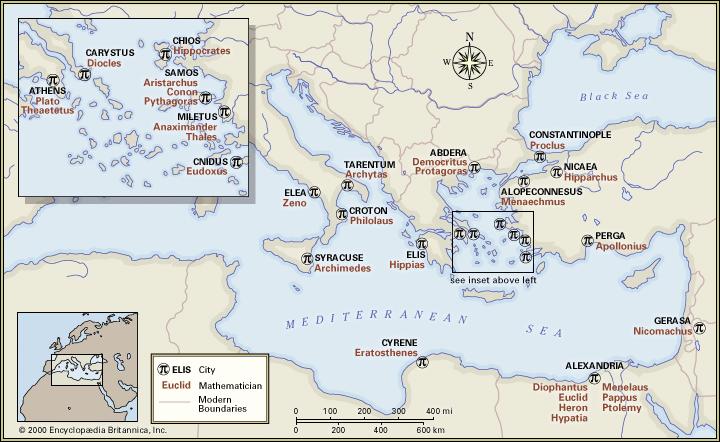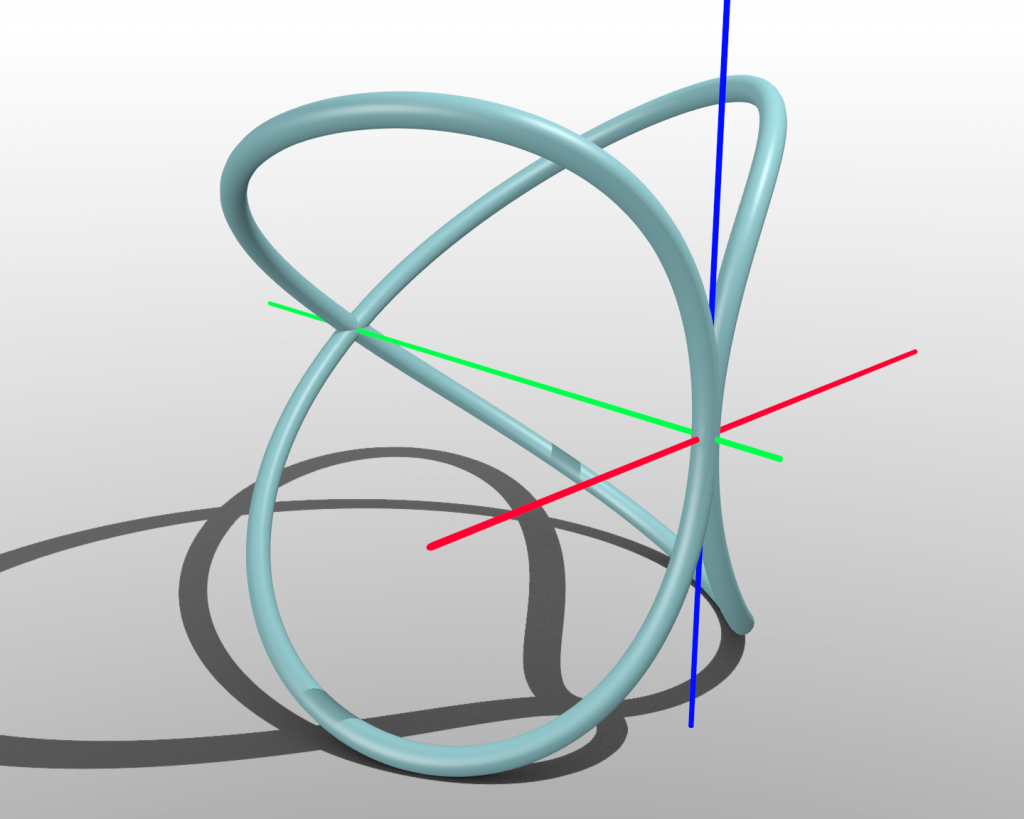
Archytas of Tarentum

Archytas was an ancient Greek philosopher, who was born in 428 BC in Tarentum, Magna Graecia (which is now southern Italy). In addition to being a philosopher, Archytas was also a mathematician, astronomer, statesman, and strategist. He is well-known for inventing what is believed to be the first-ever self-propelled flying device known as the Flying Pigeon.
When Archytas was young, he was taught by Philolaus. He became a Pythagorean, believing that only arithmetic could provide a basis for satisfactory proofs, and that this could not be accomplished via geometry. He taught mathematics to Eudoxus of Cnidus and Menaechmus. To Archytas, everything revolved around and could be explained by mathematics. He viewed mathematics as being broken into four branches: geometry, arithmetic, astronomy and music. In a preface to one of his writings (identified by some as "On Mathematics" and others as "On Harmonics"), Archytas wrote:
Mathematicians seem to me to have excellent discernment, and it is not at all strange that they should think correctly about the particulars that are; for inasmuch as they can discern excellently about the physics of the universe, they are also likely to have excellent perspective on the particulars that are. Indeed, they have transmitted to us a keen discernment about the velocities of the stars and their risings and settings, and about geometry, arithmetic, astronomy, and, not least of all, music. These seem to be sister sciences, for they concern themselves with the first two related forms of being [number and magnitude].
Archytas served well in leadership positions. At one point, the Pythagoreans were attacked and expelled, leaving only the town of Tarentum. Archytas became a leader of the Pythagoreans in Tarentum, and tried to unite the Greek towns in their area to form an alliance against non-Greek neighbors. Although under Tarentum law one person could only hold the post of commander-in-chief for one year, Archytas was elected into the position for seven consecutive years. During this time he was close friends with Plato, and it is believed that he saved Plato's life at one time.

It is said that Archytas' most important contribution was that he was the founder of mathematical mechanics. He was the inventor of what is known as "the first autonomous volatile machine of antiquity" – the Flying Pigeon. Archytas' steam-powered Flying Pigeon was a highly advanced invention for his time. It was called the Flying Pigeon because its structure resembled a bird in flight. It was built of wood, and was one of the first studies into how birds fly.
The lightweight body of the Flying Pigeon was hollow with a cylindrical shape, with wings projected out to either side, and smaller wings to the rear. The front of the object was pointed, like a bird’s beak. The shape of the structure was very aerodynamic, for maximum flying distance and speed. The rear of the Flying Pigeon had an opening that led to the internal bladder. This opening was connected to a heated, airtight boiler. As the boiler created more and more steam, the pressure of the steam eventually exceeded the mechanical resistance of the connection, and the Flying Pigeon took flight. The flight continued for several hundred meters. The Flying Pigeon is sometimes referred to as the first robot.

More on Archytas and the Unlimited Universe
Archytas also developed a rather famous argument to show that the universe is unlimited in size: He asks anyone who argues that the universe is limited to engage in a thought experiment: "If I arrived at the outermost edge of the heaven, could I extend my hand or staff into what is outside or not? It would be paradoxical [given our normal assumptions about the nature of space] not to be able to extend it." The end of the staff, once extended will mark a new limit. Archytas can advance to the new limit and ask the same question again, so that there will always be something, into which his staff can be extended, beyond the supposed limit, and hence that something is clearly unlimited.
Archytas' theory of proportions is treated in book VIII of Euclid's Elements, where is the construction for two proportional means, equivalent to the extraction of the cube root. According to Diogenes Laertius, this demonstration, which uses lines generated by moving figures to construct the two proportionals between magnitudes, was the first in which geometry was studied with concepts of mechanics. The Archytas curve, which he used in his solution of the doubling the cube problem, is named after him. The Archytas curve is created by placing a semicircle (with a diameter of d) on the diameter of one of the two circles of a cylinder (which also has a diameter of d) such that the plane of the semicircle is at right angles to the plane of the circle and then rotating the semicircle about one of its ends in the plane of the cylinder's diameter. This rotation will cut out a portion of the cylinder forming the Archytas curve.

It is believed that Archytas died in a shipwreck in 347 BC near the shore of Mattinata. His body lay unburied until a sailor cast a handful of sand upon it, so that Archytas would not have to wander on this side of the Styx for a hundred years. This story was never verified. Even after his death, Archytas’ works live on. His significant contributions to mathematics and mechanics remain useful to this day. Although the extent of his philosophical relationships is not known, it is said that Archytas influenced the works of both Plato and Aristotle. A crater on the moon has been named Archytas in his honor. It is clear that his contributions to modern society, including mathematical advances and the Flying Pigeon, were significant.
[1]
[2]
[3]
ARCHYTAS OF TARENTUM - How his flying machine flew – explained (click the play-button below to start the video):
Sources
[1] "Ancient Origins"
[2] "Encyclopaedia Britannica"
[3] "Yovisto"
Our Mobile Application
Check out Our Mobile Application "Ancient Greece Reloaded"


